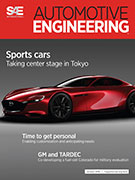Journal Article
A Systematic Mapping Study on Security Countermeasures of In-Vehicle Communication Systems
2021-11-16
Abstract The innovations of vehicle connectivity have been increasing dramatically to enhance the safety and user experience of driving, while the rising numbers of interfaces to the external world also bring security threats to vehicles. Many security countermeasures have been proposed and discussed to protect the systems and services against attacks. To provide an overview of the current states in this research field, we conducted a systematic mapping study (SMS) on the topic area “security countermeasures of in-vehicle communication systems.” A total of 279 papers are identified based on the defined study identification strategy and criteria. We discussed four research questions (RQs) related to the security countermeasures, validation methods, publication patterns, and research trends and gaps based on the extracted and classified data. Finally, we evaluated the validity threats and the whole mapping process.













